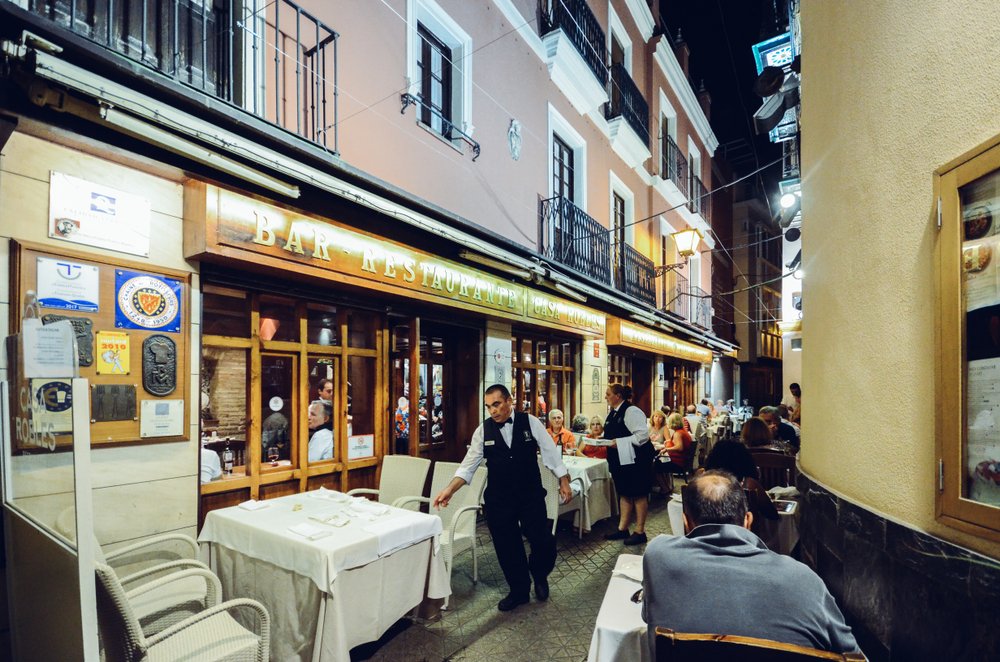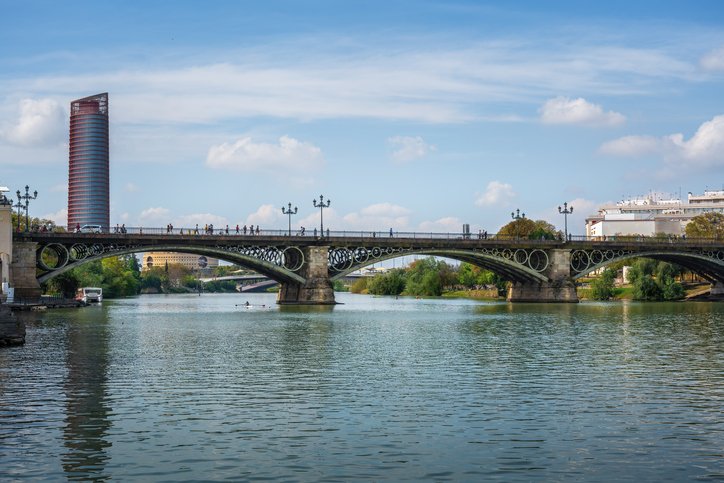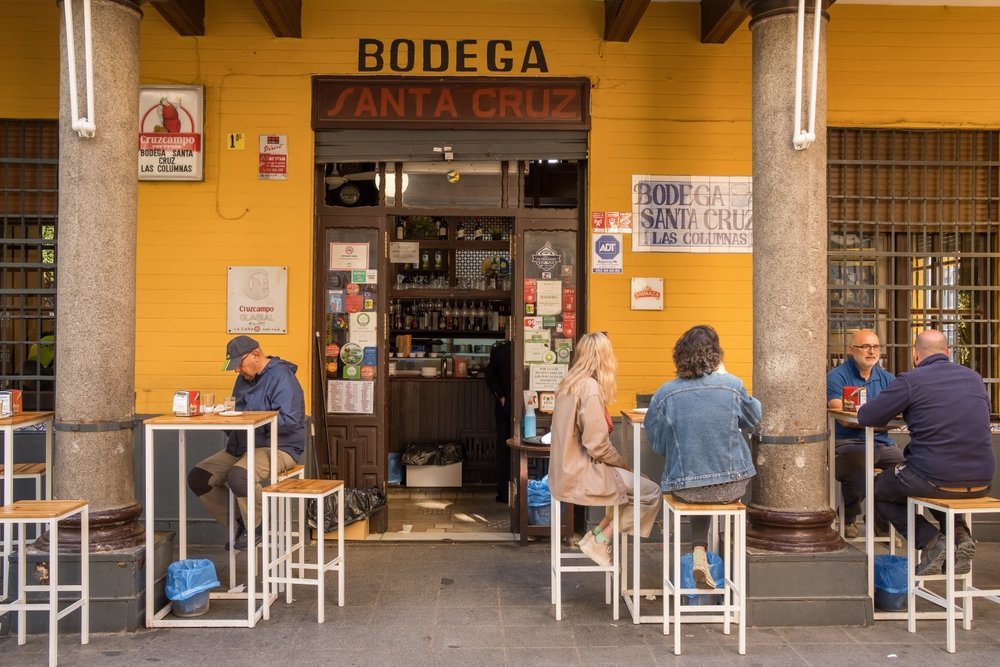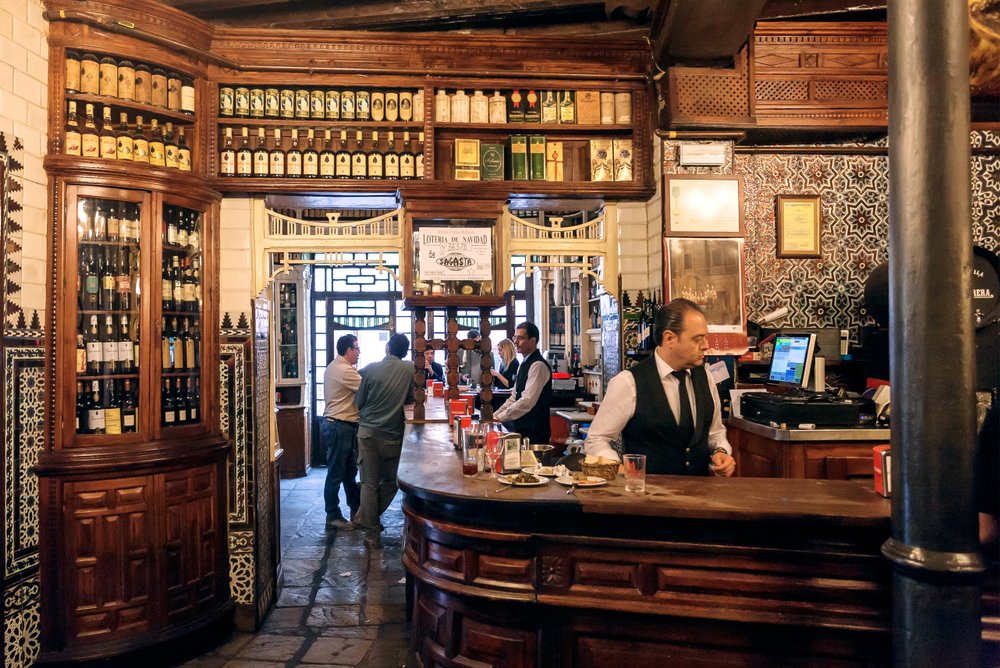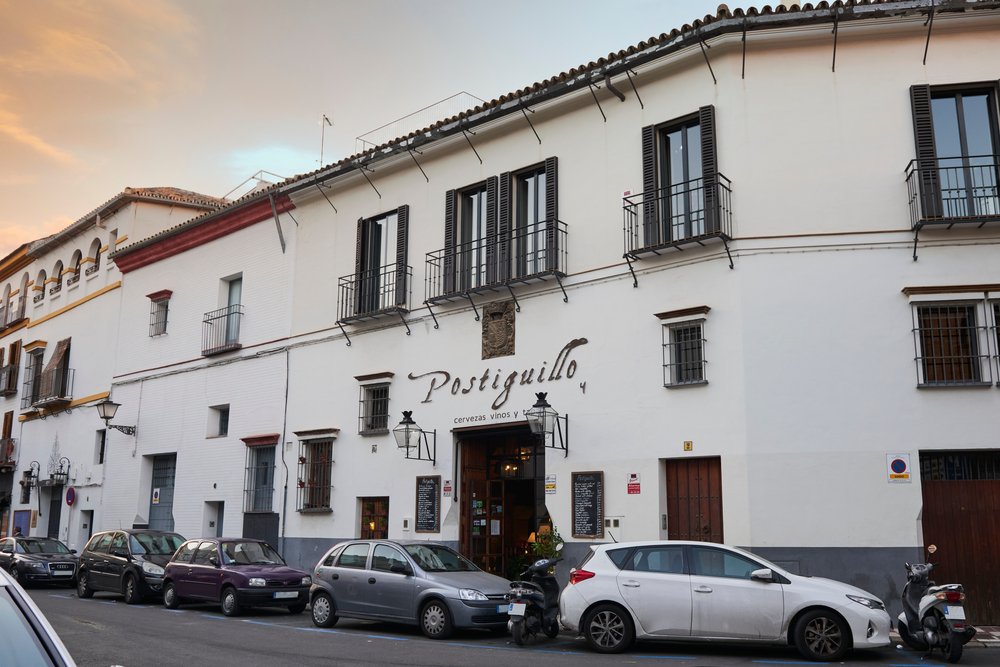Situated over the Guadalquivir River, it connects the historic center of Seville with the popular neighborhood of Triana, known for its ceramic tradition, folklore, and unique atmosphere.
History
The Triana Bridge was built between 1845 and 1852 during the reign of Isabel II, hence its official name. The main purpose of its construction was to improve communication between the center of Seville and the Triana neighborhood, which until then could only be reached by boats or temporary walkways. The construction of the bridge was an important milestone for the city, as it allowed for the urban and economic development of Triana and facilitated access to the city from the other side of the river.
Architecture and Design
The Triana Bridge is a prominent example of 19th-century architecture in Seville. Designed by French engineer Gustave Steinacher, the bridge features a neoclassical style with reminiscences of Roman architecture. It has a total length of 160 meters and consists of five cast iron arches supported by limestone pillars.
The structure of the bridge is decorated with ornamental elements, such as classic-style lampposts and wrought iron railings. In the center of the bridge stands a statue of the Virgen del Carmen, patron saint of sailors, which adds a touch of religious devotion to the structure.
Cultural Importance
The Triana Bridge is not only a vital infrastructure for the city, but also a culturally and emotionally significant symbol for the people of Seville. For more than a century and a half, it has witnessed the daily life of the city, its celebrations, and its most important historical moments.
The bridge has inspired numerous artists and writers over the years, who have immortalized it in their literary, pictorial, and musical works. Additionally, it has been the setting for many films, television programs, and cultural events, contributing to its fame and international recognition.
Panoramic Views
One of the main attractions of the Triana Bridge is the panoramic views it offers of the city of Seville and the Guadalquivir River. From the bridge, one can contemplate the urban skyline of the city, with its churches, palaces, and towers, as well as the hustle and bustle of the river and the port activity taking place along its banks.
